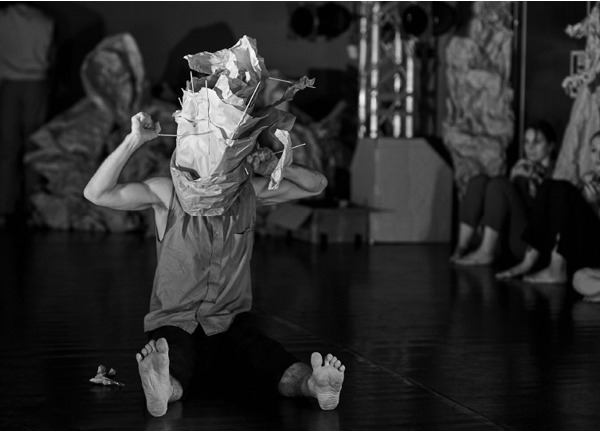
BUT THE SUN CAME UP AND WE WERE HERE
first performed on November 16, 2018
International Dance Theatres Festival, Lublin, Poland
performed three times in 2018
COLLEEN THOMAS
Samantha Allen, Darrin Wright, Oluwadamilare Ayorinde, Mikołaj Karczewsk, Krystian Lyson, Krystyna Lama Szydłowska, Monika Witkowska, Daniil Bielkin, Evgenia (Jenya) Romanovich, Robert Boston, Rebecca Makus, Rachel Jones Bella
New York, NY
150985579c150985579t150985579h150985579o150985579m150985579a150985579s150985579@150985579b150985579a150985579r150985579n150985579a150985579r150985579d150985579.150985579e150985579d150985579u
collenthomasdance.com
BUT THE SUN CAME UP AND WE WERE HERE
COLLEEN THOMAS
In my new, evening-length dance work, “But The Sun Came Up And We Were Here,” the performers’ individual architecture and history collide with my questions about the perception of self and human connection. At first glance, the audience is exposed to one man, alone, in a dystopian space full of paper garbage. There are doors to the outside world where life seems to be much better and more joyful. As the piece transpires, every performer enters, is pushed, or falls into this new undesirable world that they are now forced to negotiate. The paper turns into living memories, people and objects. The performers move and give language to their histories, cultures, and experience. They grip, tear, fly and fall into each other and in the space around them.
What are the limits—or possibilities—of a sense of belonging amid rising fear and tension in an unsteady world? This piece delves into the embodied experience of self, perception, and connection in a worldwide climate of heightened political and social unrest. The paper becomes a division in the space. It is walked on, ripped, and shaped into new possibilities. The performers use text and their weight through contact partnering to negotiate division and connection.
With its international cast of performers from the Ukraine, Belarus, Poland, and the USA, the piece asks if the expression of our individual essence, intuition, and power can be the antidote to division in a fractured world. Performers descend—at times invited, at times thrust—into an unknown, perhaps unknowable, state. Change is constant and inevitable, nothing will hold. And yet, transformation is the place of connection, volatility offers possibility, and disruption is a new beginning. As the set comes to life around them, the performers find themselves grasping at connection, at unity, sensing what stirs each interaction and reaction. The imprint that remains in our bodies, our movement, and our experience of the moment—and what we do with it—is key to creating and experiencing “But The Sun Came Up And We Were Here.”